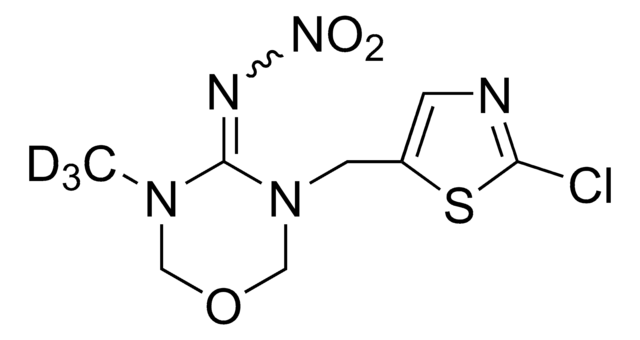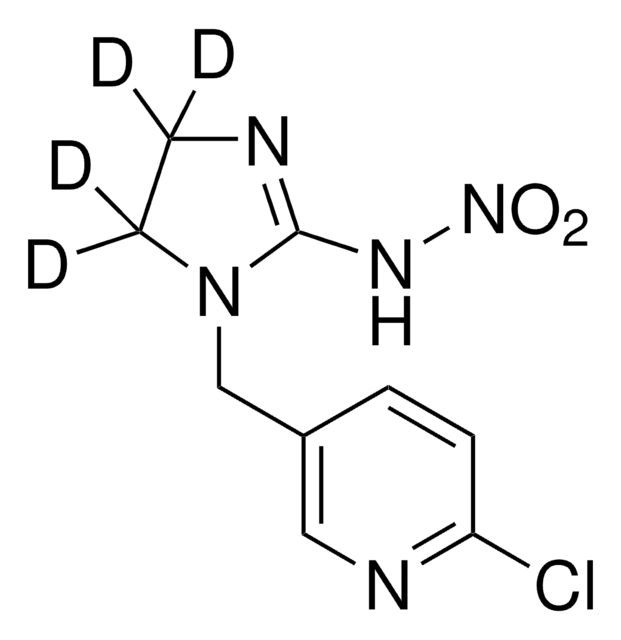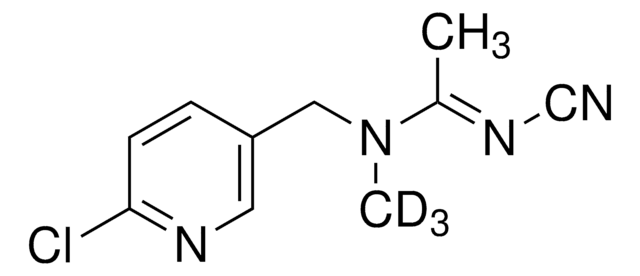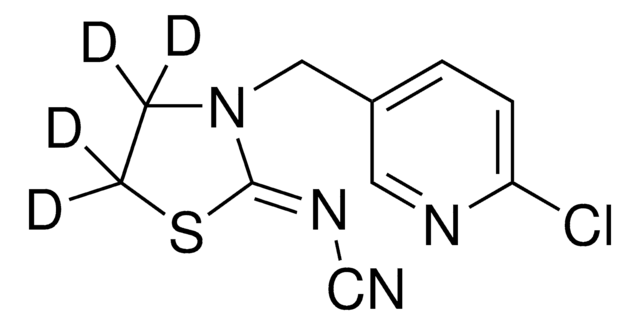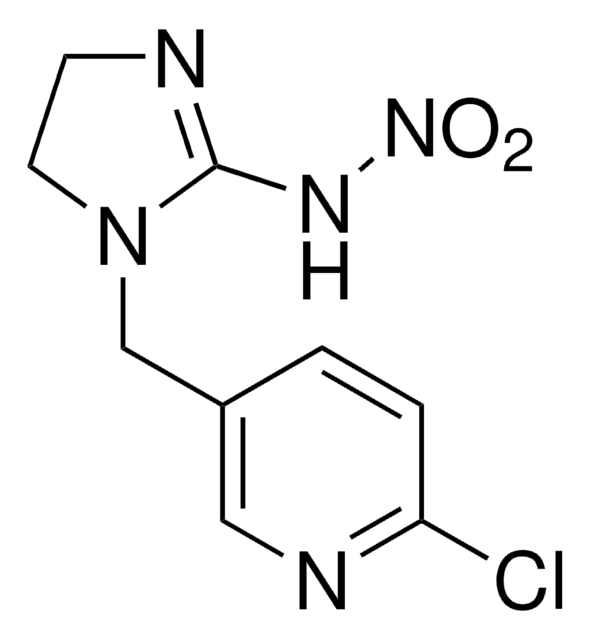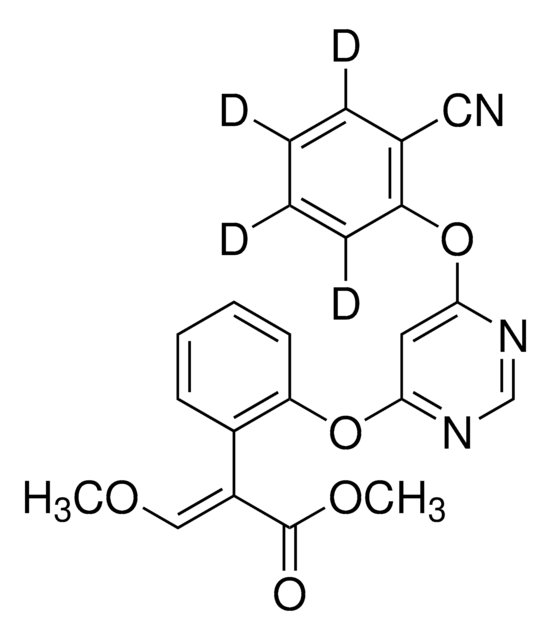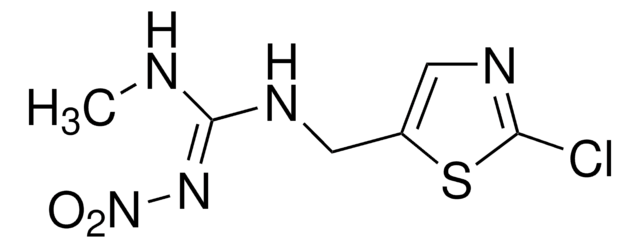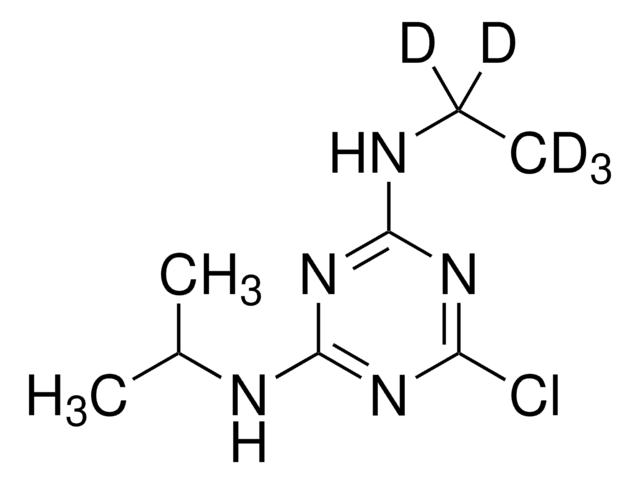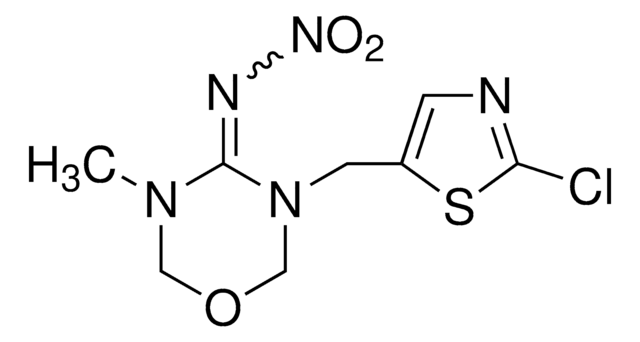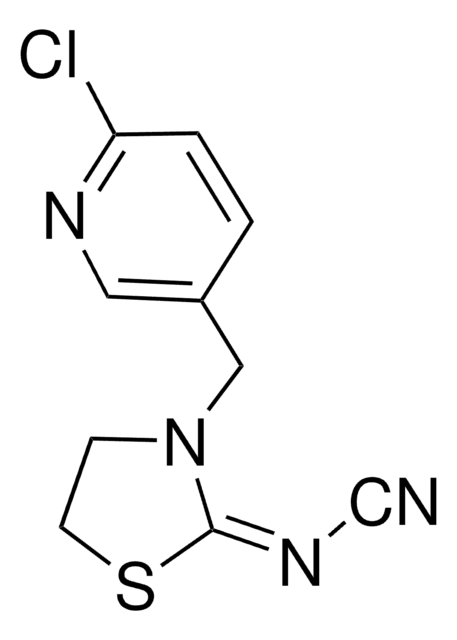56816
Clothianidin-d3
PESTANAL®, analytical standard
Sinônimo(s):
(E)-1-(2-Chloro-5-thiazolylmethyl)-3-(methyl-d3)-2-nitroguanidine
About This Item
Produtos recomendados
grau
analytical standard
Nível de qualidade
linha de produto
PESTANAL®
Ensaio
≥97.0% (HPLC)
prazo de validade
limited shelf life, expiry date on the label
técnica(s)
HPLC: suitable
gas chromatography (GC): suitable
aplicação(ões)
agriculture
environmental
Formato
neat
alteração de massa
M+3
cadeia de caracteres SMILES
[2H]C([2H])([2H])N\C(NCc1cnc(Cl)s1)=N/[N+]([O-])=O
InChI
1S/C6H8ClN5O2S/c1-8-6(11-12(13)14)10-3-4-2-9-5(7)15-4/h2H,3H2,1H3,(H2,8,10,11)/i1D3
chave InChI
PGOOBECODWQEAB-FIBGUPNXSA-N
Categorias relacionadas
Descrição geral
Aplicação
Embalagem
Informações legais
Palavra indicadora
Warning
Frases de perigo
Declarações de precaução
Classificações de perigo
Acute Tox. 4 Oral - Aquatic Acute 1 - Aquatic Chronic 1
Código de classe de armazenamento
11 - Combustible Solids
Classe de risco de água (WGK)
WGK 3
Ponto de fulgor (°F)
Not applicable
Ponto de fulgor (°C)
Not applicable
Escolha uma das versões mais recentes:
Certificados de análise (COA)
Não está vendo a versão correta?
Se precisar de uma versão específica, você pode procurar um certificado específico pelo número do lote ou da remessa.
Já possui este produto?
Encontre a documentação dos produtos que você adquiriu recentemente na biblioteca de documentos.
Os clientes também visualizaram
Protocolos
Learn more about Neonicotinoids - active substances used in plant protection products to control harmful insects.
On Friday, April 27, 2018, the European Union decided to ban the use of three neonicotinoid insecticides from use on field crops, having deemed them dangerous to bees. This application demonstrates the analysis of these banned compounds and others from dandelion blossoms using QuEChERS and LC-MS.
Nossa equipe de cientistas tem experiência em todas as áreas de pesquisa, incluindo Life Sciences, ciência de materiais, síntese química, cromatografia, química analítica e muitas outras.
Entre em contato com a assistência técnica